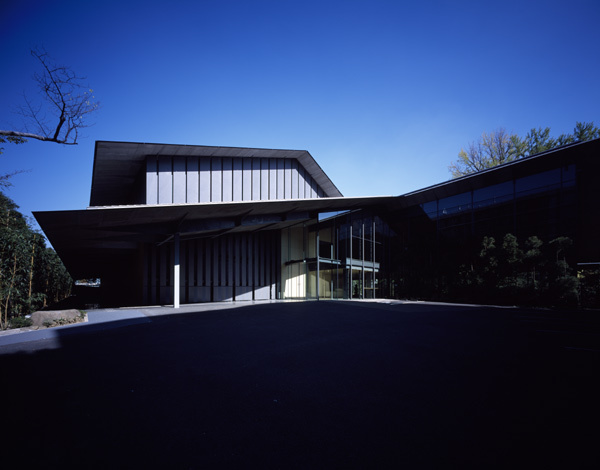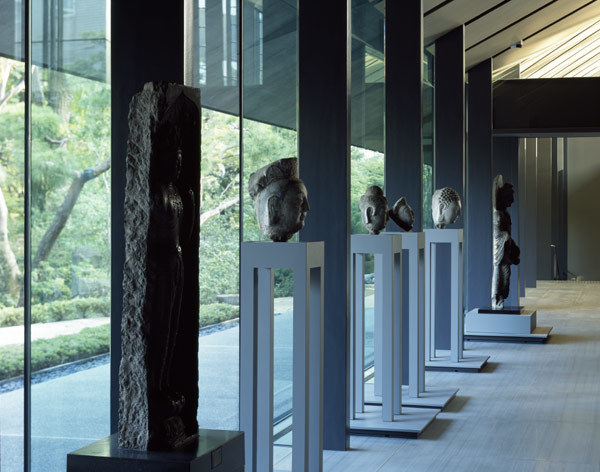Nezu Museum
Tokyo, Japan
- Architetti
- Kengo Kuma & Associates
- Sede
- 6-5-1 Minami-Aoyama, Minato-ku, 107-0062 Tokyo, Japan
- Anno
- 2009 Size
4,014.08m2
For this renewal of a historic museum in Tokyo, we attempted to conceive of the museum as an urban design rather than just an individual building.
The verdant Nezu Museum grounds mark the south end of Omotesando Avenue, a busy street crowded with high-end brand-name shops and boutiques; at the opposite end of the Avenue stand the woods of Meiji Shrine. Once the private residence of the Nezu family, the vast site exceeds 20,000㎡. The museum has enjoyed great popularity since its opening in 1914, thanks to its excellent collection of Japanese and oriental antiques and its rich green Japanese garden and tea rooms.
When we were commissioned to renovate the property, we came up with the idea of designing a dumbbell-shaped urban district embracing the two forests at either end of the avenue. We replaced the old, decrepit storehouse and exhibition house with new buildings, while half-renovating a building added in 1990 as house for storage and management.
We wanted to link the new museum naturally with its surroundings via the shade cast by its gently sloping roof, which runs between the busy commercial area and the woods. The tiled roof with its low eaves maintains the original image of the museum while also harmonizing the new building with the garden; the linear element merges with the woods behind it. By lining the roof’s lower edge with a steel plate treated with weak phosphoric acid, we were able to eliminate the theme-park-like sense of unreality the tiles tend to have, and better match their appearance with the refined works of art displayed in the museum. Phosphoric acid was also applied to the steel panels in the exterior wall, as the material can assimilate to the shade.
The building is not fenced off from the city. Rather, in an attempt to integrate the museum into the urban landscape, it remains open to the street through a bamboo thicket. People walk alongside the bamboo under the museum’s deep eaves, passing from the lively town to the beautiful forest. Like guests who walk down the traditional ‘roji’ path leading to a tea room, visitors to the museum change their mood as they follow this path, which ends the flow from Meiji Shrine down Omotesando.
Inside, the museum is softly wrapped in coral-gray sandstone from Qingdao, a material whose mood resembles that of bamboo. The interior is integrated into the garden by the broad shade of the roof, and once inside visitors savor the beauty of thin, layered interior roofs made of bamboo. The style, called ‘neritsuke’ in Japanese, features thinly shaved bamboo attached to a plywood base. The garden café was renewed as well, although a stone wall and fireplace from the old Nezu residence were preserved. The café provides another spot for visitors to enjoy nature.
Overall, the museum serves as a device that reunites city and forest.
Progetti collegati
Rivista
-
Reusing the Olympic Roof
2 days ago
-
The Boulevards of Los Angeles
3 days ago
-
Vessel to Reopen with Safety Netting
3 days ago
-
Swimming Sustainably
3 days ago




